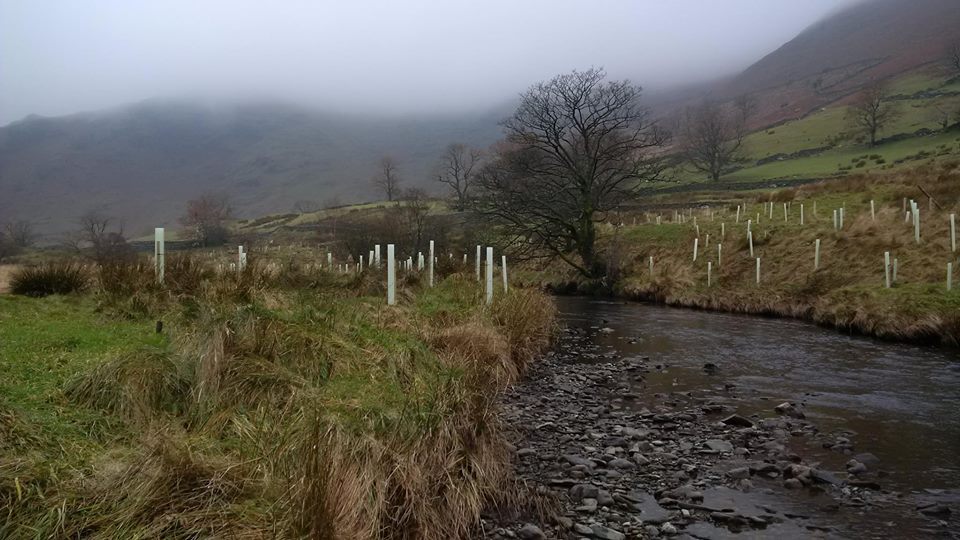Right, here goes...
Swindale Beck was straightened at least 200 years ago. The people living in the valley at the time needed to reduce flooding in their meadows to ensure they had a good crop of winter feed for their livestock. Straightening the river achieved this for a while. https://twitter.com/herdyshepherd1/status/1219579642006458368
Swindale Beck was straightened at least 200 years ago. The people living in the valley at the time needed to reduce flooding in their meadows to ensure they had a good crop of winter feed for their livestock. Straightening the river achieved this for a while. https://twitter.com/herdyshepherd1/status/1219579642006458368
But removing the beck's natural bends had a negative impact on wildlife. Water moves through a straight channel much more quickly, increasing downstream flood risk and removing smaller gravels that salmon and trout need for spawning, as well as the habitat for many invertebrates
A straight channel also makes it harder for in-river features like gravel bars and riffles to form. These are also important wildlife habitats, help to draw oxygen down into the water and further slow the flow. This was the course beck in 2014.
When RSPB took over at Swindale, the beck was a uniform width and depth, very straight, with levees that had been built up as result of years of dredging. The lack of trees providing shade further reduced the quality of the habitat. It was more like a canal than a natural river.
In 2016, working together with @unitedutilities @NECumbria and @EnvAgencyNW we (RSPB) dug a new bendy course for the beck, partly following the route of where old channels where visible. The restored channel is 180m longer than the straightened one; there is now simply more river
As well as being longer, the restored beck is much more diverse. It has many gravel bars like this one, as well as riffles and pools, each one a little different, and so is able to support a much greater diversity and abundance of insect, fish and bird life.
Different flow rates in the beck resulting from the bends means that there is now a gravel bed suitable for salmon and trout to spawn in. Salmon were observed laying eggs in the restored channel 3 months after the work was complete. There was nowhere suitable in the old beck.
Now that the levees are gone, the beck is better connected to the floodplain. Water can more easily
flood the land either side of the beck, but is also able to get back in again more easily. This means water moves more slowly through the valley, reducing downstream flood risk.
flood the land either side of the beck, but is also able to get back in again more easily. This means water moves more slowly through the valley, reducing downstream flood risk.
This more natural flooding regime turns out to be better for the hay meadows either side, which we have also restored. Pulses of flooding are far better than pools of stagnant water sitting around for days, which is what used to occur before restoration
[pic: @JFDIecologist]
[pic: @JFDIecologist]
This project sits comfortably alongside our farming operation in Swindale. We have cut the hay meadows every year since the beck restoration took place, and graze them afterwards.
[pic: @JFDIecologist]
[pic: @JFDIecologist]
We've planted trees along the beck in several places. This will help to stabilise the banks and also provide shade, keeping the water cool, benefiting fish. When the trees mature, they'll contribute woody debris to the beck, adding further habitat diversity.
We made a short film about the project which you can watch here

 Read on Twitter
Read on Twitter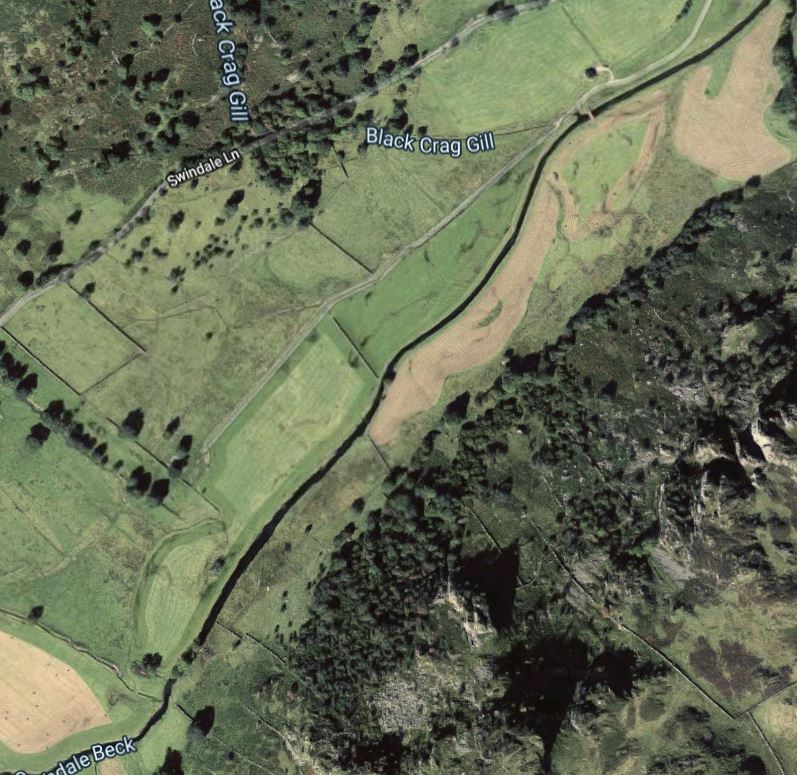
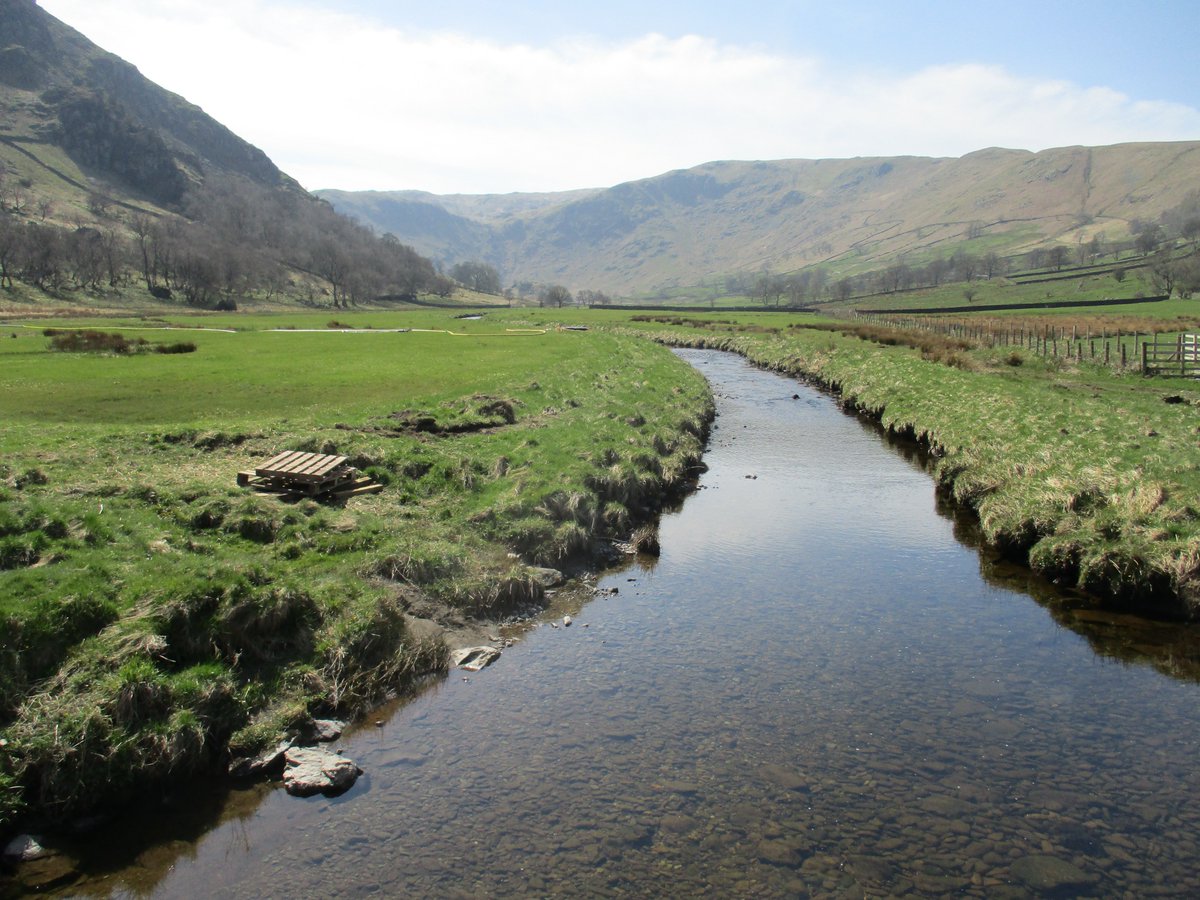
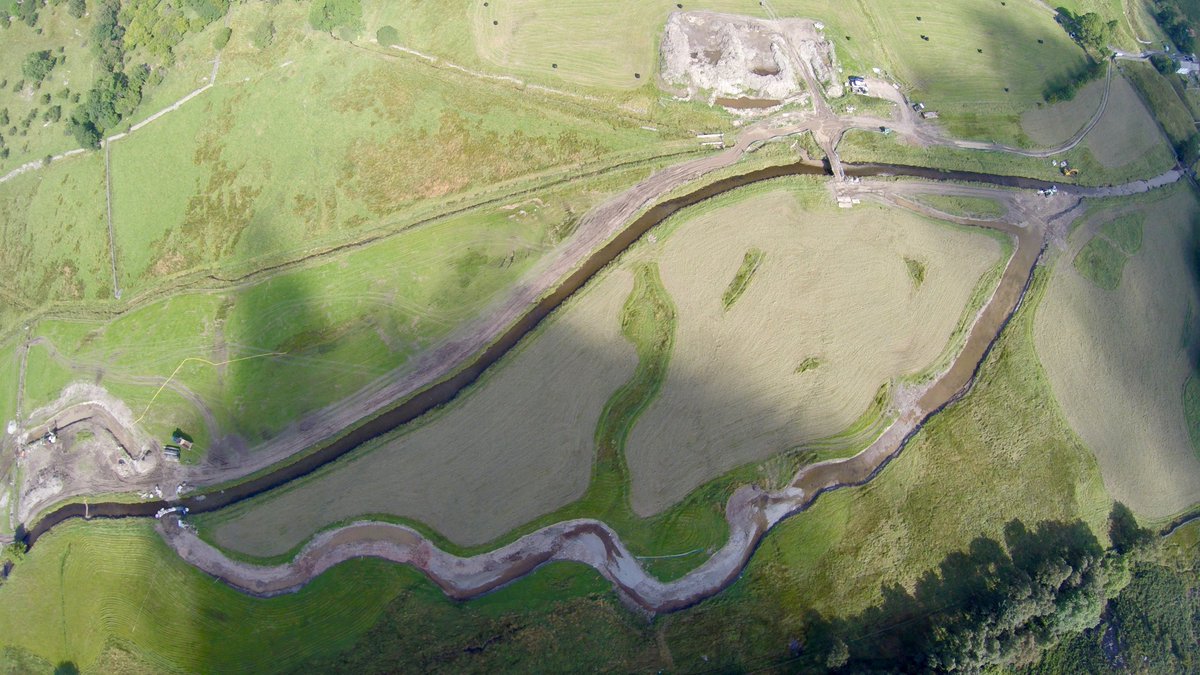
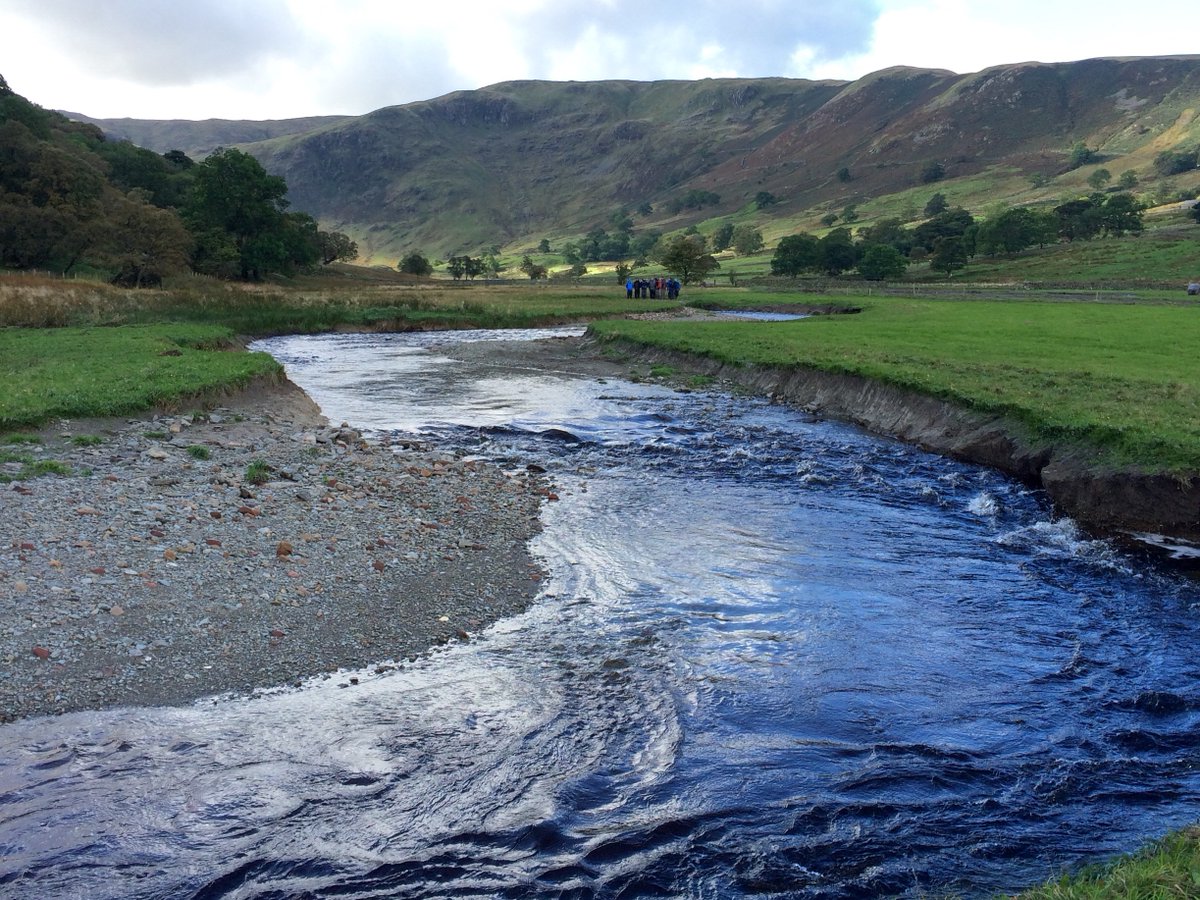
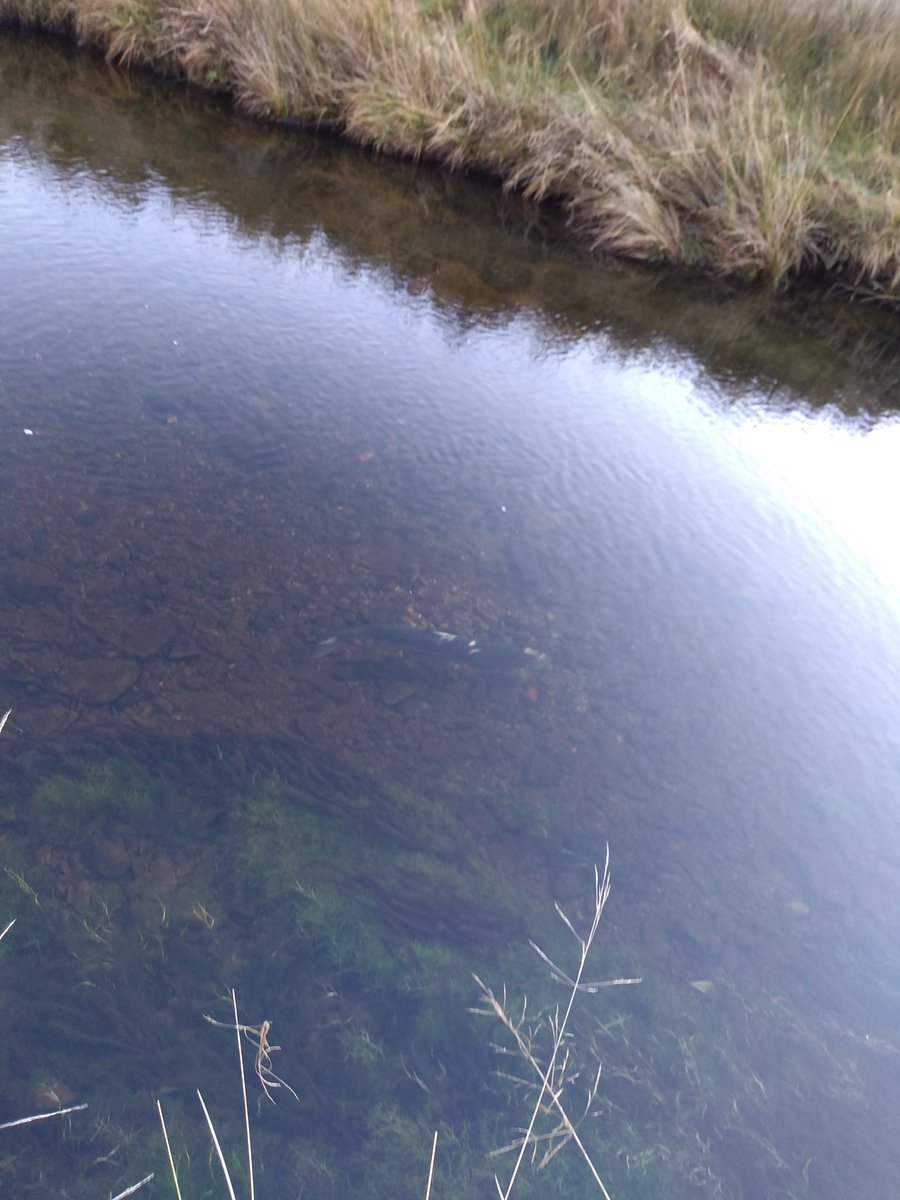
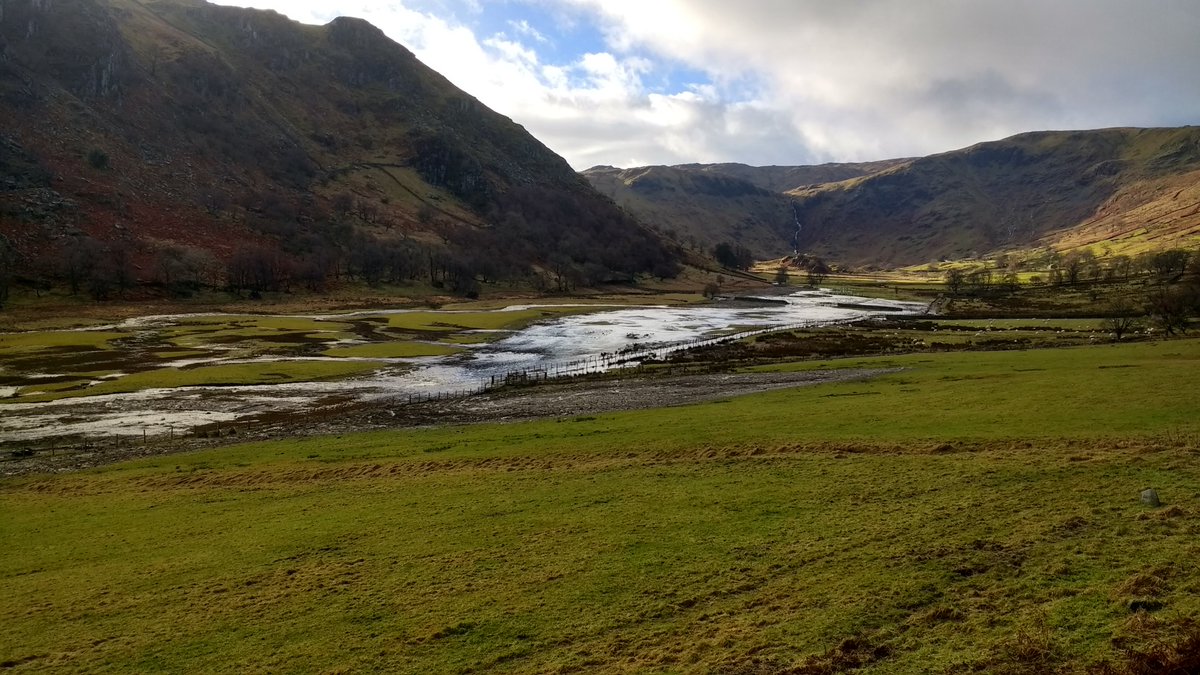
![This more natural flooding regime turns out to be better for the hay meadows either side, which we have also restored. Pulses of flooding are far better than pools of stagnant water sitting around for days, which is what used to occur before restoration [pic: @JFDIecologist] This more natural flooding regime turns out to be better for the hay meadows either side, which we have also restored. Pulses of flooding are far better than pools of stagnant water sitting around for days, which is what used to occur before restoration [pic: @JFDIecologist]](https://pbs.twimg.com/media/EOzm3Q0W4AArz2W.jpg)
![This project sits comfortably alongside our farming operation in Swindale. We have cut the hay meadows every year since the beck restoration took place, and graze them afterwards. [pic: @JFDIecologist] This project sits comfortably alongside our farming operation in Swindale. We have cut the hay meadows every year since the beck restoration took place, and graze them afterwards. [pic: @JFDIecologist]](https://pbs.twimg.com/media/EOzm39vX4AEueWn.jpg)
